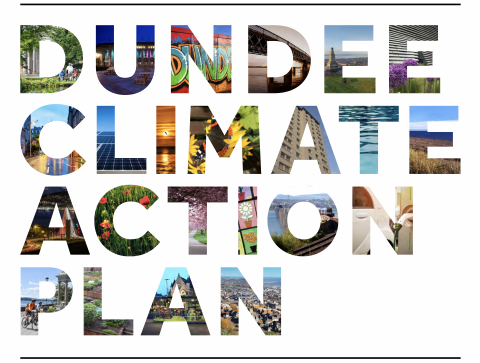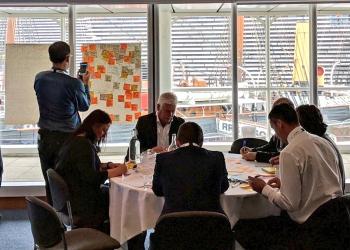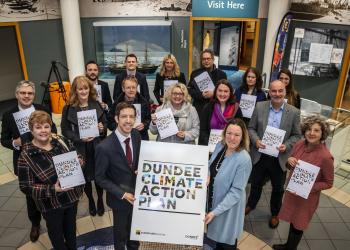The Dundee Climate Action Plan was co-designed by over 40 organisations and represents an important milestone in the city' transition to a net-zero future and catalyst for future co-operation in Dundee’s response to the climate emergency.

Dundee City Council
Go To WebsiteAddressed Challenges:
- Biodiversity loss
- Carbon emissions
- Waste
Action Areas:
- Biodiversity & Nature
- Energy
- Transport
Initiative Purpose:
- Mitigation & Adaptation
The Story

Dundee City Council acted early on Government proposals to increase public sector intervention on climate change and secured political buy-in to a ‘climate commitment’ by becoming signatories the EU Covenant of Mayors in March 2018. This Council was therefore well placed to lead the city in a response to the Climate Emergency and challenge of Net-Zero as we had already galvanised a wide range of public, private and community partners to co-design the city’s Climate Action Plan, recognising that a unified approach was needed.
Through a structured delivery programme, over 40 local and national stakeholders were engaged to develop Dundee’s Emissions Inventory, co-design climate actions and identify climate impacts on the city and service delivery through a Climate Risk and Vulnerability Assessment.
The result is a pioneering Climate Action Plan; a convincing first set of actions on our pathway to net-zero across the themes of Energy, Transport, Waste and Resilience. Initially, a workshop was held in August 2018 with stakeholders, visualising what a low carbon, resilient Dundee would look like by 2030 and then working backwards to identify short, medium- and long-term actions to allow us to meet that vision. 120 actions were initially proposed which were then refined to 64 under the themes of Energy, Transport, Waste and Resilience.
In preparing the plan we did not want to have a linear ‘draft and consult’ approach so we held multiple one-to-one sessions with environmental groups/lobbyists, to discuss what we were trying to achieve, present the evidence on what was realistic and then work with them to capture their suggestions. The process helped foster trust and productive communication with local groups, based on developing solutions together whilst overcoming obstacles in an open and constructive manner. This helped in our follow up engagement to clearly explain what we encapsulated and what we didn’t – and why. This positive process is a model that can be replicated for future community engagement.
Three types of actions were identified: actions with direct impact on emissions and resilience; those that deliver direct actions e.g. research, funding, measuring and monitoring; those that enable delivery of actions e.g. developing governance frameworks. 50% of the actions in the plan are direct actions. These are the first set of actions in a long-term pathway to achieve the net-zero target.
The plan is also a critical foundation of our Green Recovery post-Covid, allowing us to take advantage of the opportunity to do things differently and provide positive sustainable benefits for Dundee. New partners continue to sign up to the plan; we continue to share our work via journals, with other local authorities, networks and nations. Although there is still much work to do, we are confident that the level of commitment and collaboration brought about by the development of this plan will ultimately ensure its success.
Success & Outcomes
Monitoring of individual projects is undertaken by project leaders and reported on a six monthly basis. Annual monitoring reports are prepared for the Council’s Policy and Resources Committee outlining progress on action plan projects.
Advice for others looking to do something similar
Climate change is a challenging subject to communicate so adopt an ethos of ‘keep it clear’, presenting data, infographics, tables and imagery in an engaging way to ensure you have an evidence base to persuade others to commit actions, induce behavioural change processes and support others to consider low carbon investment decisions.


